In the never ending rivalry between offence and defence, there will be a continuing race in development between stealth technology and detection devices of air defence systems. In future, stealth technology will be extended to transport aircraft, rotary wing and unmanned serial platforms. While stealth technology will undoubtedly play an increasingly critical role in air operations in the future, radar systems of the future will also have far greater capability to defeat stealth. The future holds even greater challenges for human ingenuity and the capability to innovate.
Stealth technology really matured with the development of the fifth-generation fighter aircraft, the F-22 Raptor…
During the Cold War era of the 1950s, the Lockheed U-2 spy planes of the United States of America (USA) were undertaking photo reconnaissance missions regularly with impunity in the airspace over the Soviet Union. Tasks assigned to these aircraft included monitoring the progress in the development of missile test sites, key infrastructure, nuclear installations, military establishments and communications facilities.
Even while flying at extremely high altitudes well in excess of 100,000 feet above sea level, the U-2 spy planes were visible to the ground-based air defence establishments in the Soviet Union. Despite the fact that these spies-in-the-sky aeroplanes were not flying at very high speeds, they were still relatively immune to enemy action as they remained well outside the operational envelope of Soviet interceptor aircraft and the surface-to-air missile batteries.
However, the US was fairly certain that the Soviet Union would soon catch up and develop the capability to intercept and shoot down the high flying American spy planes. Hence, the foremost challenge before the American defence scientific community was the urgent need to develop a technology to reduce the vulnerability of military aircraft first by reducing the possibility of their detection by enemy radar while operating in hostile airspace.
Thus, it was that in the late 1950s, defence scientists in the US embarked on the development of “stealth technology” as was relevant to airborne military platforms to obviate the possibility of detection of the aircraft by ground-based air defence radars. But the endeavour was somewhat late to take off and the pace of development of this new technology was initially very slow.
Consequently, disaster struck on May 01, 1960, when a Lockheed U-2C that had got airborne from a secret airbase near Peshawar in Pakistan for an espionage mission over the Soviet Union, was successfully intercepted and brought down by a salvo of first of the newly developed SA-2 Guideline (S-75 Dvina) surface-to-air missile system fired by the Soviet air defence establishment. Also shot down along with the U-2 piloted by Francis Gary Powers, a pilot employed by the Central Intelligence Agency of the US, was a Soviet MiG-19 fighter aircraft that was sent up to track and pursue the U-2. Undoubtedly, downing of the U-2 was not only embarrassing but also traumatic for the US, a sentiment that provided further impetus to the US effort at the development of stealth technology.
Reflection of radar waves can be prevented by shaping the airframe in such a way that the radar waves are not reflected…
Fundamentals of Stealth Technology
To understand the fundamentals of stealth technology, it would be necessary to recapitulate the principle on which a radar system works. The mechanically rotating or fixed phased array antenna of the ground based radar transmits a beam of radio waves that are reflected by any object that comes in its path. The intensity of the reflected wave varies with the nature of the reflecting surface. A conventional all-metal aircraft with fuselage generally of rounded shape for better aerodynamic efficiency provides an excellent surface for the reflection of the transmitted radar waves.
Based on the time taken for the reflected wave to arrive back at the ground based radar antenna, the radar system pin-points the position of the aircraft and displays it as a “blip” on the radar screen. Thereafter, the radar tags and tracks further movement of the target aircraft so long as it remains within the range of the radar.
While ground-based radars enhance aviation safety under normal circumstances, in the case of overt or covert military operations, it makes an aircraft on a mission into hostile airspace highly vulnerable to enemy air defence weapon systems. It would be obvious from the above that in order to build in stealth characteristics in an aircraft, ways have to be found to prevent reflection of radar waves by absorbing the radar waves striking the aircraft through the use of appropriate material in the construction of the airframe or by painting the outer surface of the airframe with radar wave electromagnetic energy absorbing material which is generally believed to be silicon-based inorganic compound.
Reflection of radar waves can also be prevented by shaping the airframe in such a way that the radar waves are not reflected but in fact deflected and are not able to reach the ground based radar receiver. This is achieved by designing the airframe largely with flat surfaces and sharp edges that deflect the radar waves away from the ground-based radar antenna. Another design feature that can reduce radar cross section of the aircraft is carrying bombs and missile loads internally and not slung under the wings. As weapons carried externally reflect radar waves and as it is practically impossible to make weapons stealthy, it is far more expedient to carry weapon loads in internal bomb bays designed for the purpose and to be opened only at the time of release of weapons.
These methods would successfully ‘blind’ the radar. Thus, stealth technology is based on a combination of materials used in the construction of the airframe as also its unique design features that help minimise reflection of radar waves. However, as of today, even with the best of stealth technology developed so far, it has not been possible to totally eliminate the reflection of radar waves to make the aircraft invisible to the radar and prevent the ‘blip’ from appearing on the radar screen.
Reflection of radar waves can be prevented by shaping the airframe in such a way that the radar waves are not reflected…
A stealth aircraft like the F-117 Night Hawk Stealth Fighter that was employed extensively in the First Gulf War would have a radar signature of an aeroplane the size of a small bird. In any case, stealth technology cannot neutralise optical methods of detection.
Infrared Signature
Apart from factors that make an aircraft detectable by radar and the innovations that make an aircraft stealthy, there are thermal imaging systems that can pick up an aircraft both by day and night by its Infrared (IR) signature primarily generated by the high temperature of the engine exhaust. However, compared to the radar signature of the aircraft, the IR signature is relatively smaller.
While ways have been found to reduce the radar signature of the airframe, reducing the IR signature of an aircraft engine has certainly been found to be a far more challenging task. This has involved not only innovations in engine design but also its location on the aircraft. While the leading manufacturers of aero engines are engaged in research to reduce IR signature of the new engines being developed specifically for stealth aircraft, notable success has been achieved in reducing the IR signature through relocation of the engine on the airframe.
Engines on stealth aircraft are located deep inside the fuselage as can be observed on stealth aircraft such as the Northrop Grumman B-2 Bomber, the Lockheed Martin F-22 Raptor the only fifth-generation combat aircraft currently operational and the Lockheed Martin F-35 Joint Strike Fighter Lightening II. The exhaust gases exit the fuselage at a much lower temperature thereby reducing the size of the thermal image. The F-117 also has devices to deflect the exhaust gases.
Development of Stealth Aircraft
US aerospace major Lockheed Martin took the lead to launch a project at its Skunk Works facility to develop the F-117, the first true stealth aircraft to become operational anywhere in the world. The project was shrouded in utmost secrecy and although the aircraft undertook its maiden flight as early as in 1981, it was revealed to the world just before it took part in the Gulf War. This was followed by the development of the nuclear stealth bomber B-2 Spirit by Northrop Grumman as follow up to the 1970s vintage B-1 designed and developed by Rockwell International.
The major weakness in China’s stealth technology regime has been lack of capability to design and build an indigenous stealth engine…
There were some programmes though that met with failure. The McDonnell Douglas/General Dynamics A-12 Avenger II, a carrier-borne stealth aircraft programme for which contract was awarded in 1986, was abandoned in 1991 on account of apparently insurmountable technological problems and massive cost overruns. Stealth technology really matured with the development of the fifth-generation fighter aircraft, the F-22 Raptor as a replacement for the F-15 Eagle. This was a product of joint effort by Boeing and Lockheed Martin.
In response, the Russian aerospace industry came up with its own versions of fourth-generation plus semi-stealth aircraft, the Su-47 ‘Berkut’ and the MiG-35 Super Fulcrum/Raptor Killer, an advanced derivative of the MiG-29. Unlike the American stealth technology that was focused on shape of the airframe, these two Russian combat aircraft employed sophisticated Plasma Stealth Technology also known as Active Stealth Technology originally developed by the Soviet Union for its space programme. This technology involves building in the capability in the aircraft to generate a Plasma Field that covers the entire external surface. The Plasma Field absorbs the electromagnetic energy of the radar waves thus reducing the intensity of the reflected wave and minimising the radar cross-section of the target aircraft.
The next stealth aircraft which is yet to be fully operational in the US is the F-35 Joint Strike Fighter (JSF) Lightening II by Lockheed Martin as a replacement for the F-16. Being the first stealth aircraft capable of Vertical Take-Off and Landing, the single-engine F-35 is shaped to have a low radar cross-section, has an airframe made out of stealth oriented materials and incorporates infrared and visual signature reduction measures.
The equivalent Russian stealth platform is the fifth-generation Sukhoi T-50 Prospective Airborne Complex of Frontline Aviation or PAK-FA, currently under flight test phase. The aircraft has an uncanny resemblance to the F-35 in shape. Incidentally, the twin-seat version of the T-50 PAK FA for the Indian Air Force (IAF) designated as the Fifth Generation Fighter Aircraft (FGFA) is under development and is expected to enter service by the end of this decade. This will be the first stealth fighter the IAF will be privileged to own and operate. The second will possibly be the Advanced Medium Combat Aircraft without vertical stabilisers being designed by the Indian aerospace industry, if and when it does become a reality.
While the US and Russia carry on a neck-on-neck race in the development of stealth technology, China appears to be emerging on the scene as a dark horse with equally competitive products. Its first stealth platform described as “a masterpiece of home-grown innovation” is the Chengdu J-20 fifth-generation, twin-engine stealth fighter aircraft designed and developed for the People’s Liberation Army Air Force (PLAAF) by the Chengdu Aircraft Industry Group. Very similar to the American F-22 and the F-35 in airframe design, the J-20 undertook its maiden flight in January 2011.
China’s next stealth fighter aircraft that completed its successful maiden flight on October 31, 2012, is the Shenyang J-31 nicknamed Falcon Eagle. Smaller in size, lighter than the J-20 and currently under development, the J-31 Falcon Eagle is a twin-engine, mid-size fifth generation fighter jet which is also referred to as the F-60 or J-21. Once again, this new stealth fighter resembles the F-22 Raptor and the F-35 JSF leading to the suspicion that the design could have been acquired from the US in a clandestine manner.
The advantages that stealth technology offers are not without attendant limitations…
China also plans to develop, in due course, a maritime version of the aircraft which, when deployed on the Liaoning as well as her indigenous carriers to be built in the future, will give her the capability to project air power all over the world with the help of the next generation stealth war planes. The US with its carrier version of the F-35 already under trials, is clearly ahead at this point in time but this situation may change in the future.
After the Chengdu J-20 and the Shenyang J-31, the Chinese are reported to be developing the third stealth aircraft, the J-18. Meant for the PLAAF, this is a 4.5 generation fighter aircraft designed once again by the Shenyang Aircraft Corporation and is nicknamed ‘Red Eagle’. As per reports in the Japanese media, the J-18, which will have the capability of Vertical Take-off and Landing, will come with super-stealth characteristics. The prototype has already completed its maiden test flight at a secret base in Inner Mongolia. China is also reported to be developing her first weaponised stealth Unmanned Aerial Vehicle.
In view of China’s demonstrated capability to indigenously design and develop her own 4.5 generation stealth fighter aircraft, Russia has agreed to sell her Su-35 fighters equipped with advanced 117S engines. China’s meteoric rise in this field has also inspired the US Department of Defense to increase the number of F-22 and F-35 fighter jets based in Asia to counter the threat from China’s new range of stealth platforms. However, the major weakness in China’s stealth technology regime has been lack of capability to design and build an indigenous stealth engine to power its stealth fighter jets. Currently, China is dependent on Russia for the supply of stealth power plants.
The US is finding it difficult to sustain its fleet of the B-2 Bomber and the F-22 Raptor…
The Flip Side of Stealth Technology
The advantages that stealth technology offers are not without attendant limitations. On account of the unique design features of the airframe of stealth aircraft that do not exactly enhance aerodynamic excellence, as compared to a normal aircraft, the stealth aircraft invariably suffer significant performance penalties. When compared with normal conventional combat aircraft of equal weight and size, stealth aircraft have relatively lower top speed, lower payload capacity due to limitations of internal space for the carriage of weapons, are generally not as easily manoeuvrable and are prohibitively expensive to procure and maintain. Even the US is finding it difficult to sustain its fleet of the B-2 Bomber and the F-22 Raptor. These aircraft are certainly less affordable for developing countries.
The Future
In the never ending rivalry between offence and defence, there will be a continuing race in development between stealth technology and detection devices of air defence systems. In future, stealth technology will be extended to transport aircraft, rotary wing and unmanned serial platforms. While stealth technology will undoubtedly play an increasingly critical role in air operations in the future, radar systems of the future will also have far greater capability to defeat stealth. The future holds even greater challenges for human ingenuity and the capability to innovate.




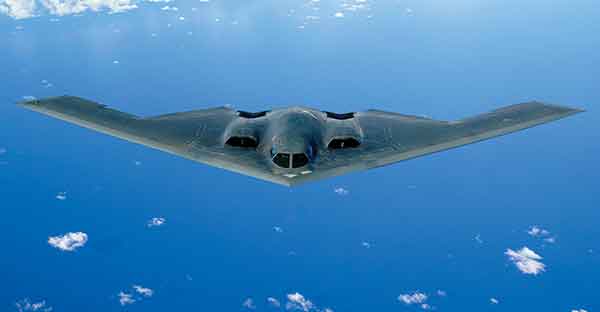
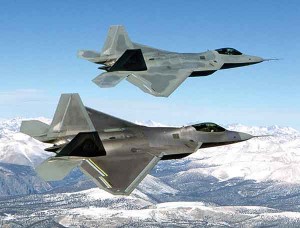
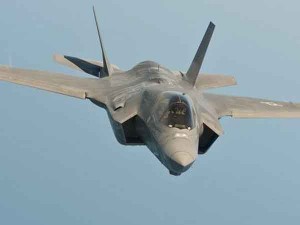
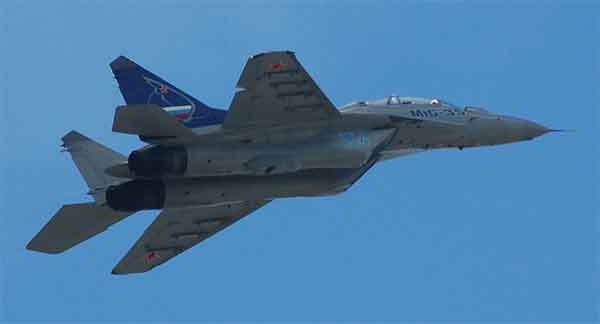
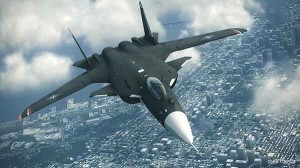
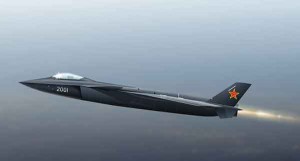
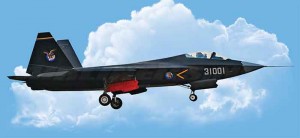

stealth has very unique interests in applications,, and USA is top dog in it,, EU still have to master its tech,
When it comes to Bharat,, pathetic govt employees cant even understand what is stealth,,lol,, they come sit in A/c rooms,, gets their salary per month,, after their death their wives gets pension funds,, how much tax payers money is wasting on each govt employee ? they are not even worth to be employed.